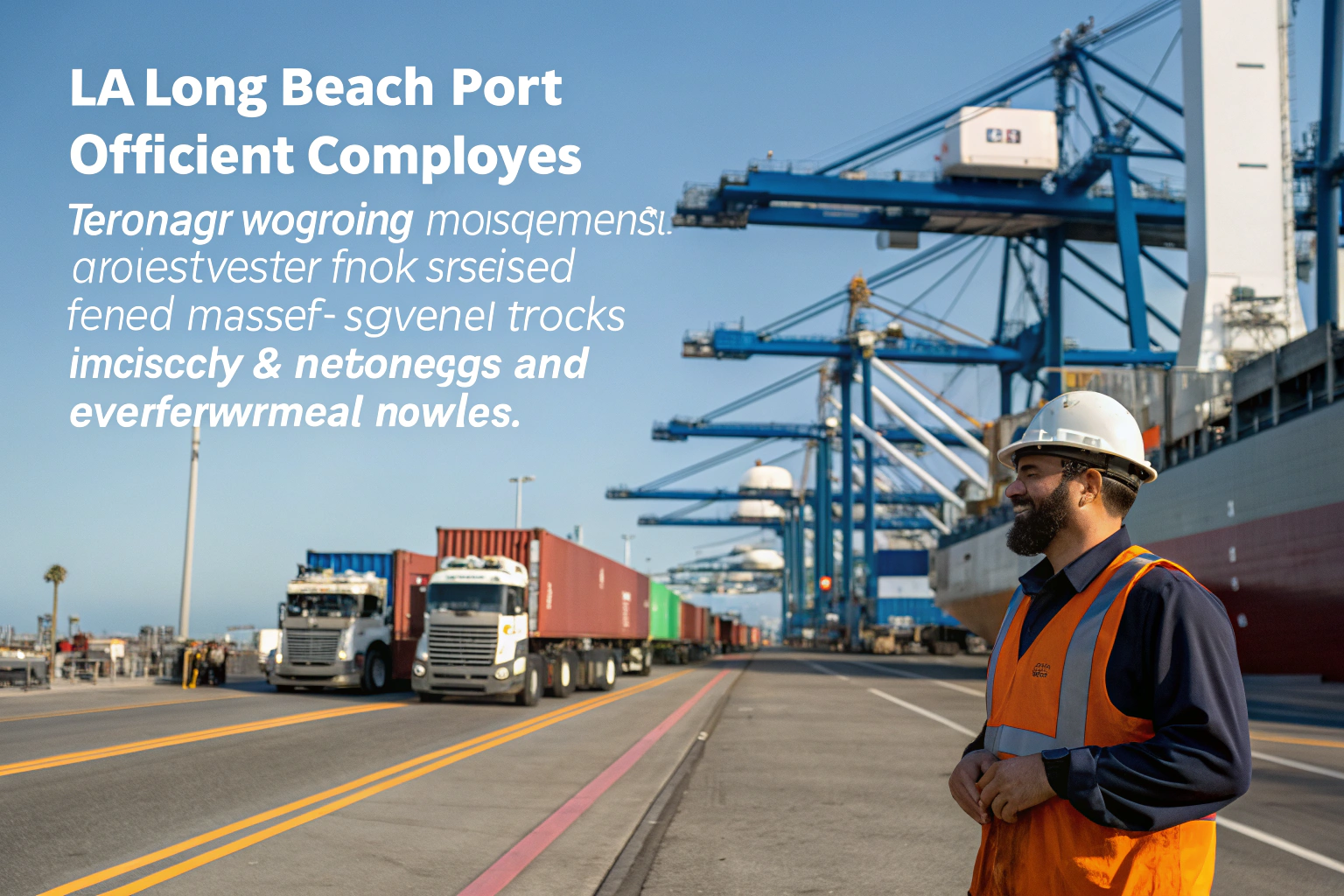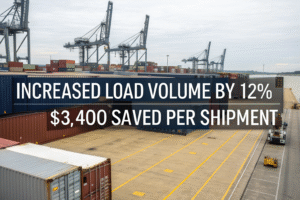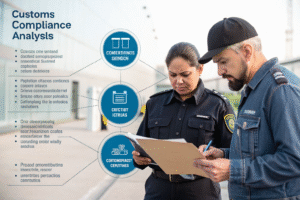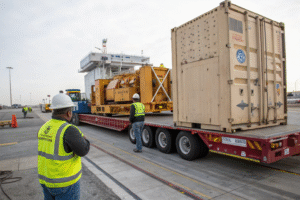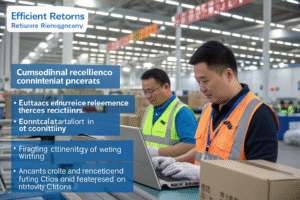The San Pedro Bay complex, comprising the Ports of Los Angeles and Long Beach, continues to evolve rapidly as the primary gateway for Asian imports to the United States. Recent developments reflect ongoing adjustments to post-pandemic normalization, new labor agreements, technological implementations, and environmental initiatives that collectively impact shipping efficiency, costs, and reliability.
The latest developments include normalized operations post-labor agreement, reduced congestion with average vessel wait times under 1 day, implementation of the updated Clean Truck Fund Rate, increased automation at terminal operations, and strategic initiatives to recapture Asian market share. These changes collectively create a more stable, efficient environment compared to the extreme volatility of 2021-2022.
Let's examine the specific operational updates, policy changes, and strategic developments that importers need to understand for effective supply chain planning through America's busiest port complex.
How have operational conditions normalized post-labor agreement?
The International Longshore and Warehouse Union (ILWU) and Pacific Maritime Association (PMA) reached a new six-year contract agreement in 2023, ending more than a year of negotiations that created significant uncertainty. The resolution has brought stability to labor relations and normalized operations across both ports.
Vessel wait times have dramatically decreased from the peak of 7-15 days during the pandemic to current averages of 0.5-2 days. Container dwell times for rail shipments have improved to approximately 5 days, down from 11-13 days during the worst congestion. Truck turn times now average 45-75 minutes compared to 90-150 minutes during peak disruptions. The labor stability has allowed both ports to focus on efficiency improvements rather than managing crisis conditions, though occasional productivity issues still occur during shift changes and breaks.

What specific operational metrics demonstrate improvement?
Key performance indicators showing recovery:
- Vessel wait times: Reduced from 7+ days to 0.5-2 days average
- Container dwell times: Improved from 11+ days to 3-5 days for local cargo
- Truck turn times: Decreased from 90+ minutes to 45-75 minutes average
- Terminal efficiency: Increased from 25-30 moves per hour to 35-45 moves per hour
- Rail operations: Reduced intermodal container dwell from 13 days to 5-7 days
- Gate operations: Extended hours utilization improving from 40% to 65%
These metrics indicate substantially improved fluidity through the port complex.
What residual challenges persist despite improvements?
Ongoing operational challenges:
- Peak season volatility still creates occasional congestion spikes
- Empty container positioning continues to create equipment imbalances
- Rail operations remain less fluid than terminal operations
- Weekend and night gates still underutilized despite availability
- Labor productivity variations occur during shift transitions
- Weather impacts particularly during winter storm seasons
Understanding these residual challenges helps maintain realistic expectations.
What environmental initiatives are impacting operations?
The San Pedro Bay ports continue implementing ambitious environmental programs that impact equipment, operations, and costs. The Clean Air Action Plan and subsequent initiatives are transforming operations toward zero-emissions goals.
The updated Clean Truck Fund Rate increased to $150 per TEU (twenty-foot equivalent unit) on April 1, 2024, affecting all non-zero-emission trucks serving the ports. The ports are progressing toward the 2035 deadline for all drayage trucks to be zero-emissions. Shore power requirements now cover most vessel types, reducing at-berth emissions. The ports are also implementing advanced clean technology demonstrations for cargo handling equipment. These environmental mandates collectively add costs but create more sustainable operations.

How is the Clean Truck Fund impacting drayage costs?
Clean Truck Fund implications:
- Rate increase: $150 per TEU for non-zero-emission trucks (increased from $100)
- Compliance timing: All drayage trucks must be zero-emissions by 2035
- Equipment transition: Significant truck replacement underway
- Cost passthrough: Most trucking companies adding surcharges
- Efficiency impact: Newer trucks often have better reliability and performance
- Funding utilization: Fees support zero-emission infrastructure development
These factors collectively increase drayage costs but drive environmental progress.
What shore power requirements affect vessel operations?
Current shore power mandates:
- Container vessel coverage: 80% of calls now use shore power
- Compliance vessel types: Container, refrigerated cargo, and cruise vessels
- Reduced emissions: Eliminates auxiliary engine operation during berthing
- Infrastructure investment: Both ports and carriers investing in compatible systems
- Operational impact: Requires vessel capability and terminal infrastructure alignment
- Environmental benefit: Reduces port community emissions significantly
Shore power represents a major emissions reduction achievement for the complex.
How is technology transforming port efficiency?
Both ports are accelerating technology implementation to improve efficiency, visibility, and resilience. These technological advancements are gradually transforming operations despite the challenges of modernizing complex, continuously operating systems.
The Port Optimizer platform now provides enhanced predictive analytics for cargo flow management. Terminal automation continues expanding with Long Beach's Middle Harbor terminal approaching full automation. Blockchain technology is being tested for document security and efficiency. Appointment system enhancements have improved truck scheduling accuracy. Digital twin technology is being deployed for operational planning and disruption response. These technologies collectively contribute to the improved efficiency metrics and reliability.

What specific technologies are delivering efficiency gains?
High-impact technology implementations:
- Port Optimizer enhancements providing better cargo forecasting
- Terminal operating system upgrades improving equipment utilization
- Automated gate systems reducing transaction times
- Blockchain documentation streamlining information exchange
- IoT container tracking enhancing visibility throughout the complex
- Digital twin simulation modeling operational improvements
These technologies address specific historical pain points in port operations.
How are appointment systems improving truck fluidity?
Appointment system enhancements:
- Extended flexibility with more appointment types and timing options
- Predictive scheduling using historical data to optimize slot availability
- Integration improvements with terminal operating systems
- Real-time adjustments accommodating operational variations
- Carrier coordination aligning vessel operations with truck capacity
- Performance analytics identifying bottlenecks and improvement opportunities
Better appointment systems have significantly contributed to reduced truck turn times.
What strategic initiatives aim to recapture market share?
Following the significant diversion of cargo to East Coast and Gulf Coast ports during the labor uncertainty, both LA and Long Beach are implementing aggressive strategies to recapture volume and reinforce their position as the preferred Asian gateway.
The ports have enhanced their "Gateway Promise" program offering faster, more reliable service commitments. Both ports are investing in near-dock rail improvements to enhance intermodal efficiency. Supply chain digitization initiatives aim to provide better visibility and predictability. Infrastructure projects are increasing capacity for larger vessels. Marketing efforts emphasize the improved labor stability and operational efficiency. These initiatives are gradually rebuilding shipper confidence in the San Pedro Bay gateway.

How are infrastructure investments enhancing capacity?
Key infrastructure projects:
- Pier B On-Dock Rail Facility in Long Beach expanding intermodal capacity
- LA Waterfront development improving terminal connectivity and efficiency
- Bridge infrastructure upgrades accommodating larger container stacks on rail
- Terminal deepening projects enabling service by larger vessels
- Near-dock facility development creating more transload and distribution options
- Highway improvement projects enhancing truck access and flow
These investments address specific capacity constraints identified during peak congestion.
What service differentiators are the ports emphasizing?
Competitive advantages being highlighted:
- Labor stability with new six-year contract ensuring operational consistency
- Infrastructure superiority with the deepest channels and most advanced terminals
- Rail connectivity offering the most extensive on-dock rail network
- Supply chain ecosystem with extensive distribution infrastructure nearby
- Environmental leadership providing sustainable shipping options
- Technology innovation delivering visibility and efficiency improvements
These differentiators aim to rebuild the value proposition for using West Coast gateways.
What should importers expect in the coming months?
Looking forward, the San Pedro Bay ports are positioned for stable, efficient operations barring unexpected disruptions. However, several factors could influence performance through the remainder of 2024 and into 2025.
Peak season 2024 is expected to be more manageable than previous years, with modest volume increases and sufficient capacity. Labor relations should remain stable under the new agreement, though productivity standards continue to be negotiated. Environmental compliance costs will continue increasing as deadlines approach. Technology implementations will gradually deliver additional efficiency gains. Importers should maintain flexible supply chain strategies while benefiting from the improved reliability of the LA/Long Beach gateway.

What peak season 2024 expectations are realistic?
Realistic peak season outlook:
- Volume projections: Moderate increases of 3-6% over 2023 levels
- Capacity adequacy: Sufficient terminal and labor capacity for projected volumes
- Potential challenges: Weather events and rail congestion remain possible
- Preparedness level: Both ports better equipped than during previous peaks
- Contingency planning: More robust backup plans for potential disruptions
- Communication improvements: Better advance notice of operational changes
This outlook suggests a manageable peak season compared to recent challenging years.
How should importers adjust strategies based on current conditions?
Strategic adjustments for importers:
- Maintain diversification but increase West Coast volume allocation
- Update cost models reflecting current drayage and environmental charges
- Enhance visibility using improved port data systems
- Build relationships with terminals and service providers
- Monitor labor productivity for potential negotiation impacts
- Plan for continuous evolution as technology and regulations advance
These adjustments leverage improved conditions while maintaining protection against potential disruptions.
Conclusion
The Ports of Los Angeles and Long Beach have transitioned from crisis management to stable operations with focused improvement initiatives. The labor agreement resolution, implemented technologies, environmental progress, and strategic investments collectively create a more reliable gateway for Asian imports. While challenges remain and costs continue evolving, the current environment represents the most stable and efficient conditions since pre-pandemic periods. Importers can confidently increase utilization of the San Pedro Bay complex while maintaining the diversified approaches developed during recent volatile years. The ports' ongoing transformation suggests continued improvement in efficiency, sustainability, and reliability through 2024 and beyond.
